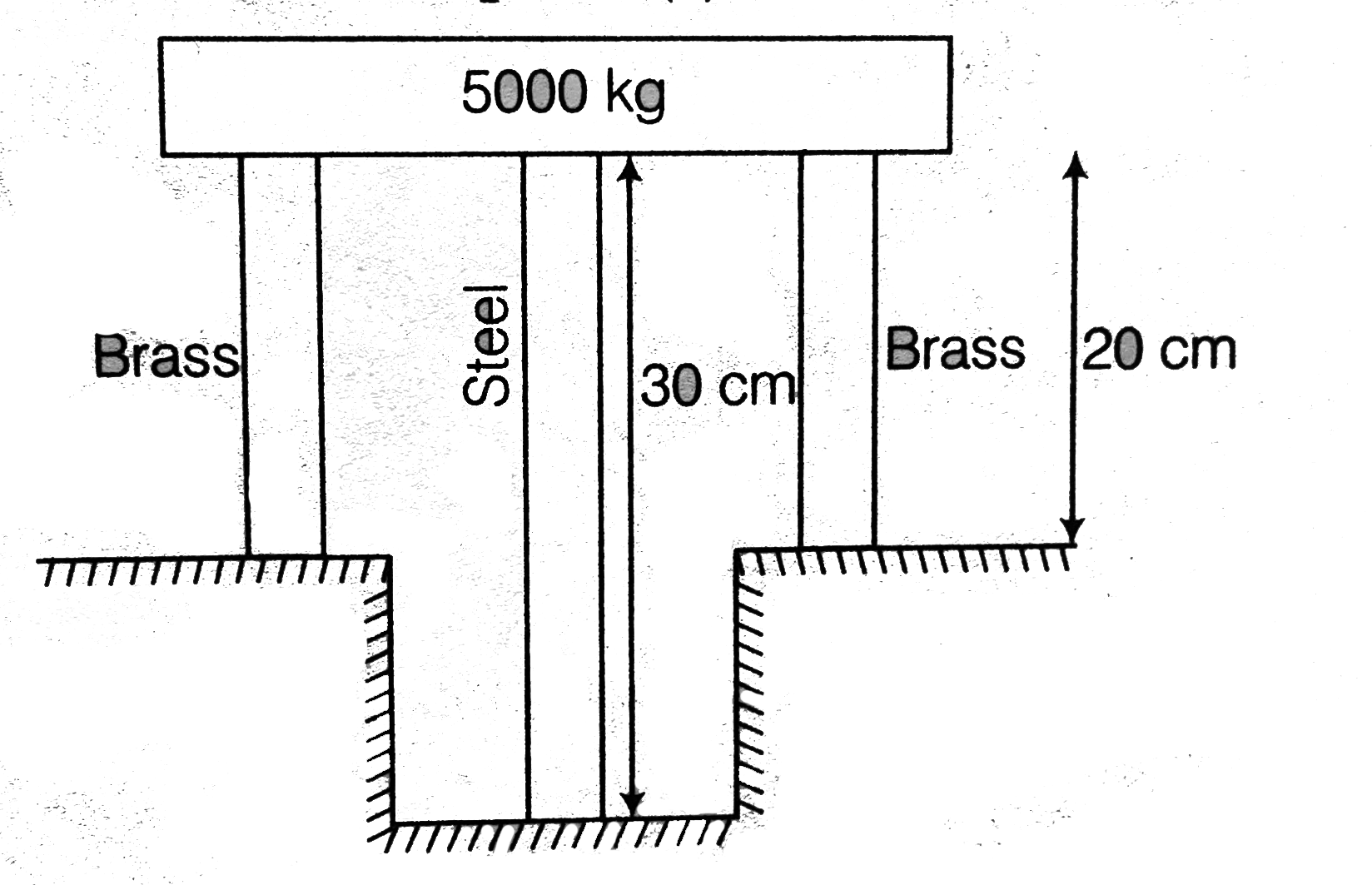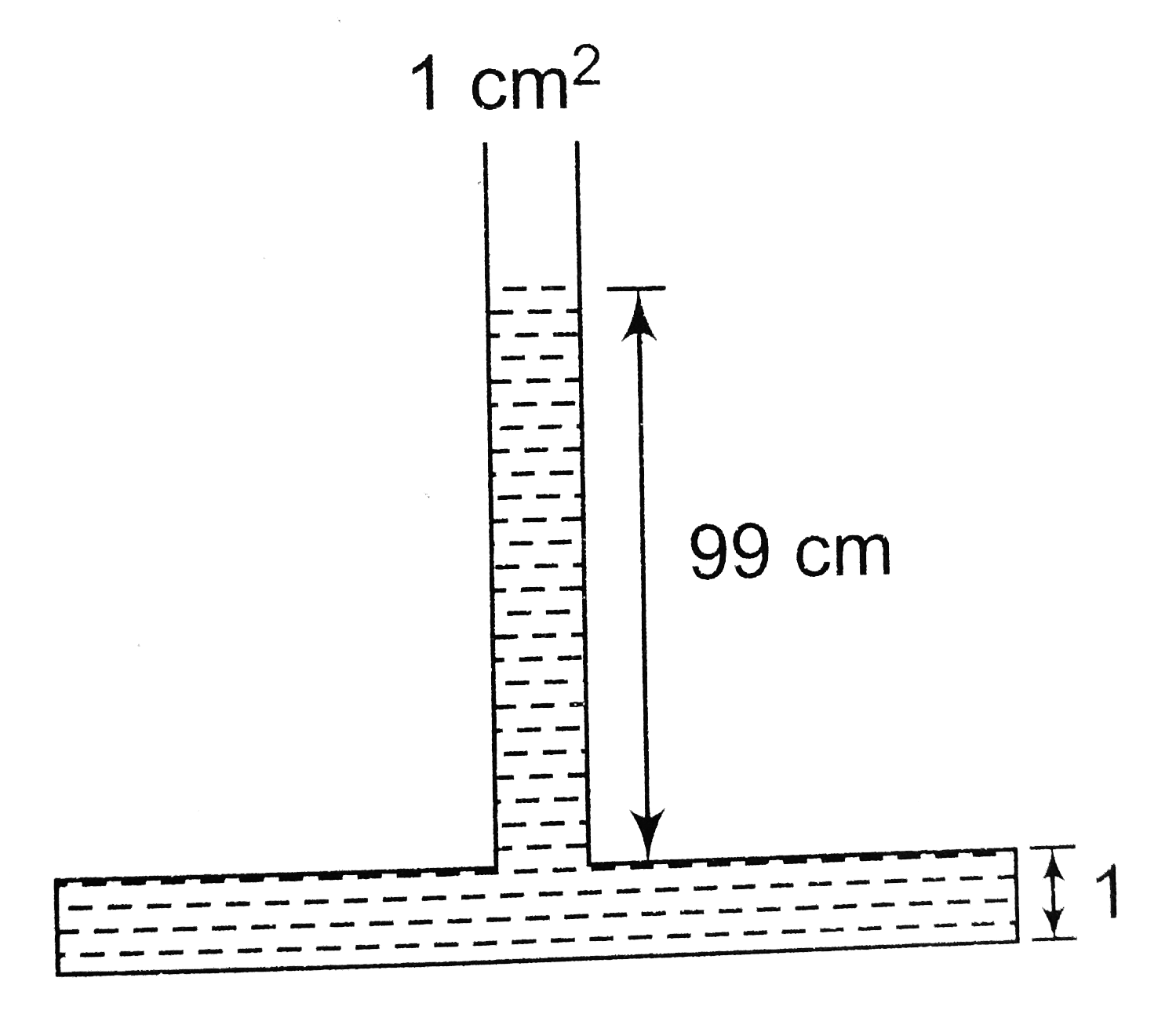The two femurs each of cross-sectional area 10cm2 support the upper part of a human body of mass 40 kg. the average pressure sustained by the femurs is (take g=10ms−2)
2×102Nm−2
2×104Nm−2
2×105Nm−2
2×106Nm−2
The correct Answer is:C
To find the average pressure sustained by the femurs, we can follow these steps:
Step 1: Identify the given values
- Mass of the upper body (m) = 40 kg
- Acceleration due to gravity (g) = 10 m/s²
- Cross-sectional area of one femur (A) = 10 cm²
Step 2: Convert the cross-sectional area to SI units
Since the area is given in cm², we need to convert it to m²:
1 cm2=10−4 m2
Thus,
A=10 cm2=10×10−4 m2=10−3 m2
Step 3: Calculate the total cross-sectional area of both femurs
Since there are two femurs, the total area (A_total) is:
Atotal=2×A=2×10−3 m2=2×10−3 m2
Step 4: Calculate the force exerted by the body
The force (F) exerted by the body is equal to its weight, which can be calculated using the formula:
F=m⋅g
Substituting the values:
F=40 kg×10 m/s2=400 N
Step 5: Calculate the average pressure sustained by the femurs
Pressure (P) is defined as force per unit area:
P=FAtotal
Substituting the values we calculated:
P=400 N2×10−3 m2=4000.002=200000 N/m2
This can also be expressed in Pascals (Pa):
P=2×105 Pa
Final Answer
The average pressure sustained by the femurs is:
P=2×105 Pa
---
- Mass of the upper body (m) = 40 kg
- Acceleration due to gravity (g) = 10 m/s²
- Cross-sectional area of one femur (A) = 10 cm²
Since the area is given in cm², we need to convert it to m²:
1 cm2=10−4 m2
Thus,
A=10 cm2=10×10−4 m2=10−3 m2
Since there are two femurs, the total area (A_total) is:
Atotal=2×A=2×10−3 m2=2×10−3 m2
The force (F) exerted by the body is equal to its weight, which can be calculated using the formula:
F=m⋅g
Substituting the values:
F=40 kg×10 m/s2=400 N
Pressure (P) is defined as force per unit area:
P=FAtotal
Substituting the values we calculated:
P=400 N2×10−3 m2=4000.002=200000 N/m2
This can also be expressed in Pascals (Pa):
P=2×105 Pa
The average pressure sustained by the femurs is:
P=2×105 Pa
Topper's Solved these Questions
- BOOK - NCERT FINGERTPS ENGLISHCHAPTER - MECHANICAL PROPERTIES OF FLUIDSEXERCISE - Higher Order Thinking Skills8videos
MECHANICAL PROPERTIES OF FLUIDS
- BOOK - NCERT FINGERTPS ENGLISHCHAPTER - MECHANICAL PROPERTIES OF FLUIDSEXERCISE - Exemplar Problems5videos
MECHANICAL PROPERTIES OF FLUIDS
- BOOK - NCERT FINGERTPS ENGLISHCHAPTER - LAWS OF MOTIONEXERCISE - Assertion And Reason15videos
LAWS OF MOTION
- BOOK - NCERT FINGERTPS ENGLISHCHAPTER - MECHANICAL PROPERTIES OF SOLIDSEXERCISE - Assertion And Reason15videos
MECHANICAL PROPERTIES OF SOLIDS
Similar Questions
The two thigh bones (femur bones) each of cross-sectional area 10cm2 support the upper part of a human body of mass 40 kg . Estimate the average pressure sustained by the femurs. g=10m/s2
View SolutionThe two thigh bones (femur bones) each of cross-sectional area 10cm2 support the upper part of a human body of mass 40 kg . Estimate the average pressure sustained by the femurs. g=10m/s2
View SolutionThe two thigh bones each of cross-sectional area 15cm2 support the upper part of a person of mass 70 kg. The pressure sustained by these thigh bones is
View SolutionA body falls freely for 10 s. Its average velocity during this journey is (Take g=10ms−2)
View SolutionA steel rod of cross-sectional area 16cm2 and two brass rods each of cross-sectional area 10cm2 together support a load of 5000kg as shown in the figure. ( Given, Ysteel=2×106kgcm−2andYbrass=106kgcm−2). Choose the correct option(s).
 View Solution
View SolutionA lawn sprinkler has 20 holes, each of cross-sectional area 2.0x10−2cm2, and is connected to a hose pipe of cross sectional area 2.4cm2. If the speed of water in the hose pipe is 1.5ms−1, the speed of water as it emerges from the holes is
View SolutionWhat is the weight of a block of mass 10.5 kg ? Take g=10ms−2
View SolutionA tube 1cm2 in cross- section is attached to the top of a vessel 1 cm high and of cross - section 100 cm2 Water is poured into the system filling it to a depth of 100 cm above the bottom of the vessel as shown in fig. Take g =10 ms−2 .
 View Solution
View SolutionA tube 1cm2 in cross- section is attached to the top of a vessel 1 cm high and of cross - section 100 cm2 Water is poured into the system filling it to a depth of 100 cm above the bottom of the vessel as shown in fig. Take g =10 ms−2 .
 View Solution
View SolutionA piston of cross-sectional area 100cm2 is used in a hydraulic pressure to exert a force of 107 dyne on the water. The cross-sectional area of the other piston which support a truck of mass 2000 kg is
View Solution

